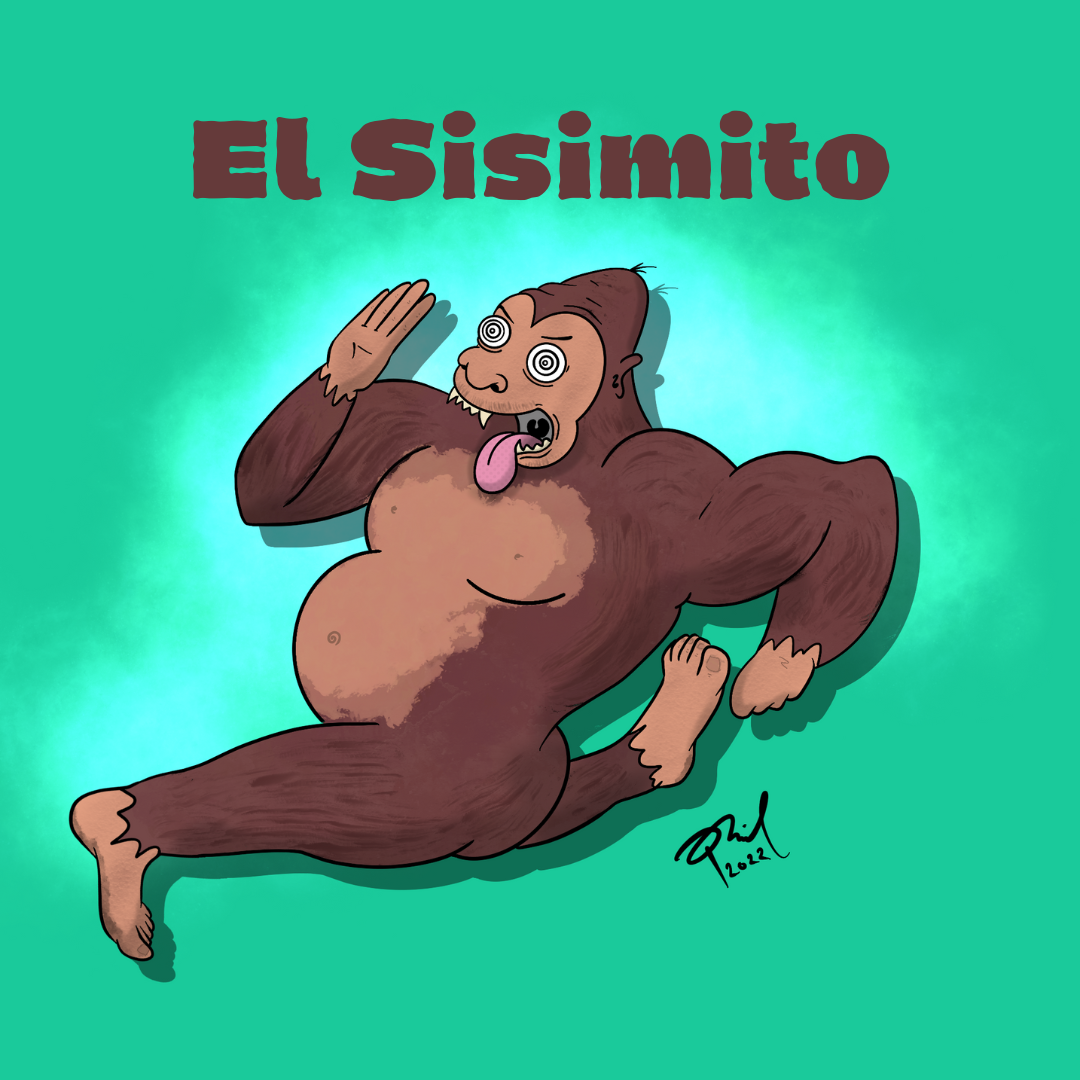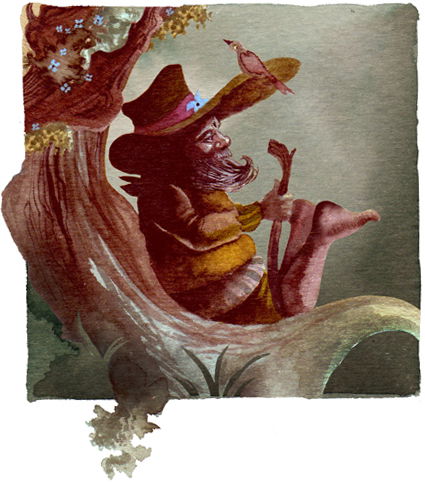Yes, Central America's got a big hairy guy, too!

Article & top Illustration by Phillip LaPalme, Edited by Willow Coyle. All Rights Restricted.
Central America is home to a cryptid primate generally known as a Sisimite (also known as Sisimito/Sisimita, Sismidu, Súkara, Itacayo or the Mexican Bigfoot). There is no direct English translation, but the names are thought to have evolved from the Nahuatl word Tzitzimitl (monstrous Aztec deities often described as “demons” or “devils”). The Sisimite is also sometimes referred to as “Guardian of the Forest”, though you may not think so after reading this article.
The Sisimite is described as a mix between ape and human, not unlike our very own Bigfoot. Though the Sisimite is sometimes described as being short in stature, it is more commonly described as being much taller than an average human. The creatures are covered in dark brown or black, matted fur and have four large fingers and generally no thumbs. Most reports and legends describe the Sisimite as having backwards feet and typically they are without knees — Imagine how it must look while walking! These “Hairy-men”, live deep within the jungles, mountains and caves of Central America and more often than not they are said to be very aggressive and although they’re said to eat fruits and berries, they are more prone to snack on hapless humans.
In many tales it is said that the male Sisimito will kill men (and sometimes eat them), and abduct and assault women — The opposite is said of the female Sisimita, who can be just as sinister. It is also told that if a man looks into the eyes of a Sesimite and eludes the beast he will be dead within a month’s time; however, if a woman makes eye contact with the creature, her life will be prolonged.
There are a handful of anecdotal tips on how to elude or harm the Sisimites — Most of the lore points to a Sisimite’s fear of both water and dogs so, when venturing into the jungle, you’re advised to stick near water and bring a canine companion with you. Apparently, it is also possible to confuse them by making misleading footprints or even cause them to trip by running or dancing circles around them. The most sure fire way to defeat them however, is to set them on fire — gruesome.
In an article originally published in 1915 by George Byron Gordon for the Museum Journal, a story was related in which a woman was abducted from her home by a Sisimito. Her husband was thought by authorities to have fabricated the Sisimite story to hide the murder of his wife — Subsequently, he was thrown into jail for many years. At some point, a group of hunters caught sighting of a “hairy man” in the jungle and a search party was organized to capture the beast. What they found was a “wild-woman” whom they immediately captured (with some trouble). The article goes on to say, ”As we were crossing the brook with her, a Sisemite appeared on the hillside, waving his arms and yelling. On his back was a child or monkey child which he took in his hands and held aloft as if to show it to the woman, who renewed her struggle to be free. The Sisemite came far down the hill almost to the brook; he dropped the child and tore off great branches from big trees which he threw at us”. It was thought that this “wild-woman” was the missing wife; however, when her husband was shown the “wild-woman” and was asked if he recognized her he said,” My wife was young and beautiful; the woman I see is old and ugly”. The woman never spoke a word; She refused to eat and a few days after her capture she died. Stories like this one often describe a “union” between the abducted woman and the Sisimito which produces “ape-men”.
There is a story quite similar to the one recounted in the Museum Journal article — One which is told through oral history. In this version, the woman who had been captured, later bore three hybrid children with this Sisimito. One day, the captive woman finally managed to escape and upon realizing her absence, the Sisimito grabbed the three children and pursued the fleeing woman. She was able to escape by crossing the river — unable to cross the water himself, the Sisimito held the children up, hoping to entice their mother to return. When she did not come back the Sisimito, out of anger, dropped the children into the river from which they never returned.
The Sisimite’s distinct feature of backwards feet is an interesting one — In his book The Bigfoot Book: The Encyclopedia of Sasquatch, Yeti and Cryptid Primates, Nick Redfern points out that, “… there is a longstanding, worldwide tradition of cryptic apes being able to “reverse” their feet”. There may be a link between Central America’s Bigfoot and those other hairy creatures from elsewhere in the world although the trait of the backwards feet may also be due to the legends of the Sisimite being conflated with another Central American legend - That of Tata Duende. This supernatural creature also has backwards feet and the trademark, “Look Ma, no thumbs”. Tata Duende also has a propensity to abduct people or lure them to danger. It is said that the backwards feet serve to confuse victims of these entities and lead them to believe they are walking away from the creature when they are actually being lured into a trap. Tata Duende shares many similarities with the Sisimite legends, but also mirrors many of the qualities of El Sombrerón (described in a previous article).
Just to make things even more confusing, the Sisimite shares some traits with another folkloric ape, Mico Brujo (or La Mona) — A shapeshifting, sorcerer-monkey of mischief and death (link below!).
In some lore, the Sisimite is also a shapeshifter entity that can assume human form to lead people from villages to their demise. This shapeshifting trait often will lead people to blame other folkloric entities for local deaths such as that of La Llorona or Xtabay (both are Femme Fatales of Fame). The element of shapeshifting sounds suspiciously like what we hear in Faerie lore.
As with all lore, the details of the characters and stories change and morph over time, sometimes taking on a completely new form. Maybe there is a strange, aggressive hairy hominid running amok in Central America — Perhaps it even hails from the “Fae-Realm”. Whether or not stories of the Sisimite have been influenced by other Mesoamerican lore such as Tata Duende, El Sombrerón or Mico Brujo it’s safe to say that something is out there. Maybe these stories have been fabricated as a way to teach people to be aware of deadly creatures in the jungle — It’s possible these stories have been born out of a real phenomenon.
What do you think the Sisimite are? Hairy-hominid, Fae creature or something else entirely? Let us know what you think and if you have any additional details or stories be sure to send them in!
References:
https://www.penn.museum/sites/journal/416/
https://www.larubeya.com/the-legends-belize-folklore-myths-broken/
https://en.wikipedia.org/wiki/Sisimito
http://www.bigfootencounters.com/creatures/sisimite.htm
https://www.xplorhonduras.com/el-sisimite/
https://en.wikipedia.org/wiki/Tata_Duende
https://ambergriscaye.com/25years/elsisimito.html
https://en.wikipedia.org/wiki/Tzitzimitl
https://www.deguate.com/artman/publish/misterios-leyendas/La_Leyenda_Del_Mico_Brujo_3458.shtml
Redfern, N. (2015). The bigfoot book: The encyclopedia of sasquatch, yeti and cryptid primates (p. 574). Visible Ink Press.

